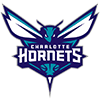In the next couple days I'll be posting adjusted pre-draft dynasty rankings for the 2023 rookie class. The post-combine market is definitely going to look different in both dynasty and best ball/redraft, and these rankings mean to address all concerns along those lines.
Up first is the running backs.
If you play offseason best ball on Underdog Fantasy you'll want to read my two articles projecting the post-combine ADP shifts for the top 35 rookies in the ADP -- the first 17 players here and the next 18 here.
1. Bijan Robinson, Texas (5-11, 215)
Robinson ran a 4.46-second 40 at 215 pounds – about the expected time but at a slightly lower weight than expected. Robinson's stock shouldn't change. I don't think he's as good of a prospect as guys like Jonathan Taylor, Travis Etienne or Breece Hall, but it appears Robinson will go sooner than any of them did.
Previous projection: Round 1 (Top 20)
New projection: No change
Comparison: Marshawn Lynch
2. Jahmyr Gibbs, Alabama (5-9, 199)
Gibbs is dangerous all-around but his pass-catching abilities in particular are truly rare. To pose the pass-catching threat he does with 4.36 speed is a major, unique problem for defenses and one I don't think they're likely to solve. Austin Ekeler-type pass-catching upside is on the table, though at 199 pounds Gibbs won't be as busy of a ballcarrier as his most common comparison (Alvin Kamara).
Previous projection: Top 50
New projection: Round 1
Comparison: Austin Ekeler (production-wise)/Alvin Kamara (aesthetic-wise)
3. Zach Charbonnet, UCLA (6-0, 214)
Charbonnet weighed in lighter than expected, but a 4.53-second 40, 37-inch vertical and 122-inch broad jump check the box. While Charbonnet would be better served by playing nearer to 220 pounds, these testing numbers say he can add that weight and still remain sufficiently athletic to thrive at the NFL level. Charbonnet was always an easy evaluation – be skeptical of analysts who ever told you otherwise.
Previous projection: Round 2-3
New projection: Round 2
Comparison: DeMarco Murray
4. Devon Achane, Texas A&M (5-9, 188)
There are a handful of nightmare case studies of prospects similar to Achane, and fewer that worked out especially well. The good case is pretty much Warrick Dunn – truly one of the most improbable players in league history – while the bad cases include players like Garrett Wolfe, Dri Archer and Noel Devine.
In my opinion, if Achane must be a Dunn-like exception then that's just what he'll be. It's fair to find that possibility unconvincing, but Achane is meaningfully different from the bad case studies. Archer (173) and Devine (179) were both under 180 pounds and an inch or more shorter than Achane, meaning they were both smaller in general and less able to add weight. Achane is also quite a bit faster than Devine. It's Wolfe who's the truly concerning case, because he was an extremely productive player at Northern Illinois and at 5-foot-7 and ½, 186 pounds his frame is pretty close to Achane's (though still shorter by nearly an inch and a half). Wolfe (4.39-second pro day 40) was quite fast himself, but there is a meaningful difference between a 4.39 pro day time – one that could easily be more like 4.45 or worse on the slower combine track – and the 4.32 Achane ran at the combine. Not just that, but according to Daniel Jeremiah, Achane was not at 100 percent when he ran his 40. Even if Achane is 'only' 4.32 fast, though, it's still at least one magnitude away from Wolfe's speed grade.
Dunn ran a 10.3-second 100m time at Florida State. Achane ran as low as a 10.18. Achane likely ran his times at a heavier weight than Dunn, too, as Dunn reported to the 1997 combine at 176 pounds. Rather than looking at historical Achane comparisons and concluding 'he can't do it,' you should consider the possibility that there just isn't a good sample size of Achane-like prospects, and if the sample size were to grow it wouldn't take one or two hits for the hit rate narrative to invert on that player type. As much as Achane's traits have little history of success in the NFL, it would be objectively wrong to say it has any history of failure, either.
Previous projection: Round 1-2
New projection: No change
Comparison: Warrick Dunn
5. Israel Abanikanda, Pittsburgh (5-10, 216)
Abanikanda didn't do any testing at the combine, but his 5-foot-10, 216-pound weigh in was a close to ideal frame. The tape and the consensus expectation both say Abanikanda is likely to clear the 4.50-second mark with relative ease in the 40, which he's expected to run at the Pittsburgh pro day March 29. There's a decent chance he runs south of 4.45, in which case he'd clear a pretty significant athletic threshold for his frame. Abanikanda is very young – he won't turn 21 until October – and sometimes exceptionally young prospects need a little extra time to develop, so it's possible that he'll be a slow starter to his career. With production like his and his expected athletic metrics, though, Abanikanda is very likely to emerge as at least an average starter in the next three years, with plenty of precedent for better than average, too.
Previous projection: 3-4
New projection: 2-3
Comparison: Miles Sanders
6. Chase Brown, Illinois (5-10, 209)
Brown did well at the combine, logging a 4.43-second 40, 40-inch vertical and 127-inch broad jump. Brown did not do great at the combine like many are saying, so we'll see whether the hype gets a little out of hand as internet fantasy communities play telephone between Twitter and Discord chats. If Brown's hype stays measured, though, he could be a good dynasty pick. As a prospect Brown fits into that category where, while he's unlikely to stand out, he should be good enough to capitalize if he stumbles into playing time. He can't take up a workhorse role for extended periods at 209 pounds, but Brown is good enough as a pass catcher that he should hold up with at least average efficiency in a 400-to-500 snap role, depending on the quality of the quarterback and offensive line.
Previous projection: 4-5
New projection: 3-4
Comparison: Donald Brown
7. Tyjae Spears, Tulane (5-10, 201)
Spears looks convincingly dangerous with the ball, even when running between the tackles, and he posted very good marks in the vertical (39 inches) and broad jumps (125 inches). The problem is that at 201 he is too light to realistically project for workload volume, and he's not as well-demonstrated as a receiver as some others in the draft. Spears will almost certainly be explosive on a per-carry basis in the NFL, and a guy like Aaron Jones could arguably be a solid case study precedent for Spears to succeed as a fantasy running back, it's just the kind of thing that risks keeping him more in the flex category of as a fantasy back – one whose spike weeks are dependent on touchdowns or long carries (which he could very well be good at).
Previous projection: Round 3-5
New projection: Round 3-4
Comparison: Travis Homer
8. Deuce Vaughn, Kansas State (5-5, 176)
Vaughn's 5-foot-5 height is certainly a concern, but his density is not. Of course he has major workload limitations, especially as a ballcarrier, but at 176 pounds Vaughn's weight should not be an inhibitor from scrimmage. If Vaughn were 5-foot-9, for instance, it would actually be bad because it would undermine his anchor ability to the point that it would threaten his effectiveness from-scrimmage in addition to severely limiting his workload volume.
The Kansas State pro day is March 31. If Vaughn runs a fast 40 time – let's say 4.42 or better – then I think he has what it takes to stick as a rotational big-play threat, though one who needs to stand out as a pass catcher to be useful in fantasy.
Previous projection: 3-5
New projection: No change
Comparison: ?
9. DeWayne McBride, UAB (5-10, 209)
McBride is getting tougher as an evaluation. His production and tape at UAB is elite stuff, but the ways he produced and succeeded at UAB were with methods similar to fellow big-play workhorse backs like Rashaad Penny and Tyler Allgeier. McBride is unlikely to be anywhere near as fast as Penny (4.46 40 at 220 pounds), and at a surprising 209 pounds McBride's frame doesn't at all resemble that of Allgeier (224 pounds). If McBride isn't as fast as Penny then he can't outrun as many players at the NFL level as Penny can, and if he's 15 pounds lighter than Allgeier he won't have the anchor that Allgeier does.
McBride didn't participate in the combine testing due to a hamstring injury. The UAB pro day is March 22. If McBride runs the 40 there at 209 pounds then he'll need to run a much better 40 than previously expected – anything worse than 4.53 or so would make me anxious. None of this is to take into account that McBride is completely untested as a pass catcher. I really, really want McBride to be a hit and ultimately think he will still be one, but the path is narrower than it seemed a month ago.
Previous projection: Round 3-4
New projection: Round 3-6
Comparison: Tashard Choice
10. Keaton Mitchell, East Carolina (5-8, 179)
I was hoping to see Mitchell weigh in at or higher than 185, and at his 179 weight I hoped he would run more like a 4.35 than a 4.37, but slight disappointment or not Mitchell's overall portrayal remains the same. We knew at his perilously light weight he would have volume limitations in the NFL at the very least, and we also already suspected that his frame could be so light that it negates his from-scrimmage effectiveness in the NFL. Like Achane, historically similar players to Mitchell have not done well in the NFL for the most part. If Mitchell is successful in the NFL he will be one of the first of his type.
Achane would also be one of the first of his type to succeed in the NFL, and Mitchell's odds are clearly worse yet. Whereas I named Garrett Wolfe as a surprisingly encouraging case study for Achane, Wolfe is not a promising example when projecting Mitchell. At 179 Mitchell is seven pounds lighter than Wolfe, so Mitchell's 4.37 combine time – what otherwise might have been a means of distinguishing him favorably from Wolfe – is not a clear advantage over Wolfe's pro day 4.39. Great as Mitchell was at East Carolina, he was not more productive than Wolfe was at Northern Illinois.
I'm listing Mitchell this high in the rankings just because his speed and big-play ability are so unique, and it is possible that Wolfe would have succeeded if he were a step faster, even if he was eight pounds lighter. I'm also not convinced that, if a simulation were run 10 times, that Wolfe would fail in all of them. Mitchell would be an anomaly to succeed, but anomalies do happen and it helps to have angle-breaking speed like Mitchell does.
Previous projection: Round 3-4
New projection: Round 4-5
Comparison: Garrett Wolfe
11. Eric Gray, Oklahoma (5-10, 207)
Gray has limited upside and probably isn't a starter in the NFL, but if he has a path to fantasy viability it will be due to his pass-catching abilities. His combine was ambiguous but probably good enough, logging a 37.5-inch vertical (that's good) and 118-inch broad jump (that's not helpful). The jumps indicate generally sufficient athleticism for a rotational role, but the 207-pound frame is too light to reliably scale up volume. If Gray bulked up to withstand volume, he'd likely lose the otherwise sufficient athletic metrics he has in the meantime. Gray knows how to play running back in any situation, so he could be a good target for a team looking to implement a committee approach.
Previous projection: Round 4-6
New projection: Round 4-5
Comparison: Mewelde Moore
12. Tank Bigsby, Auburn (6-0, 210)
Bigsby disappointed many by running a 4.56-second 40 and posting mediocre jumps (32.5-inch vertical, 119-inch broad jump), but there was never any reason to project him as highly as many did (mostly out of groupthink) prior to the combine. Bigsby's modest athleticism and high-stance running are categorical volume limitations over a long sample, so if he ends up in a volume-viable role it will probably be mostly by happenstance and it probably won't last long.
Previous projection: Round 3-5
New projection: Round 4-6
Comparison: James Jackson
13. Kendre Miller, TCU (5-11, 215)
Miller didn't do any combine testing, meaning he's expected to do his testing at the TCU pro day March 30. Miller isn't expected to test all that well, though not poorly, either. With no obvious calling card it's tough to determine Miller's path to NFL viability, but his frame is good and he was consistently very productive at TCU. If the tools are no worse than average then he should have some role in the NFL
Previous projection: Round 3-5
New projection: Round 4-5
Comparison: Ke'Shawn Vaughn
14. Zach Evans, Mississippi (5-11, 201)
I'm not trying to write Evans off, because he definitely has some significant amount of talent as a ballcarrier, but it's difficult to remember the last prospect like him who did anything of note in the NFL. That's again not to say he can't, it just requires a lot of projection and speculation to theorize just what he is and how he'll do it. His poor weigh in of 201 pounds was probably influenced by an injury he's dealing with, which was also the given reason for why he didn't work out at the combine.
The issue is that even if Evans runs well at the Mississippi pro day – thus confirming he has the athletic traits necessary for his innate open-field running ability to translate to the NFL level – at that point he still just projects as a plus rushing specialist, being untested at best as a pass catcher. There generally isn't much of a market for undersized rushing specialists, but it's worth keeping Evans' suspected athletic testing in mind and it's arguably worth giving him some benefit of the doubt if he tests well in a pro day setting.
Previous projection: Round 4-5
New projection: No change
Comparison: Ronald Jones
15. Kenny McIntosh, Georgia (6-0, 204)
McIntosh is built too narrowly and with too little anchor to project as a credible ballcarrier in the NFL beyond something like six to eight carries per game. His pass-catching abilities are quite convincing, meanwhile, and could very well be a viable path for him to earn NFL playing time and fantasy utility. The problem is that it's possible that McIntosh's density-adjusted speed (4.62-second 40) is too weak for his otherwise strong pass-catching skill set to materialize on the NFL field. Basically, McIntosh could kill it as a receiver, but it's the only way he could vaguely succeed as a fantasy investment. Limited ceiling, no floor.
Previous projection: Round 3-5
New projection: Round 5-7
Comparison: Marion Grice
16. Roschon Johnson, Texas (6-0, 219)
Johnson's weigh-in was pretty good, and his 10-yard split (1.52 seconds) was more flattering than his 40 (4.58 seconds). Johnson's 122-inch broad jump was also good. His lack of production at Texas implies Johnson is mostly a rotational player in the NFL, and one who lacks standout efficiency, but he should be active on gamedays and in position for usage as a sort of swing backup between short-yardage and hurryup situations.
Previous Projection: Round 4-6
New projection: Round 5-6
Comparison: Jonathan Williams
17. Sean Tucker, Syracuse (5-9, 205)
Tucker can regain ground if he tests well at the Syracuse pro day March 20, but if he can't register above-average times and jumps there then it becomes difficult to project him as more than an RB3 type. Tucker's skill set is pretty much beyond doubt after a distinguished career at Syracuse, but what's less clear is whether Tucker's tools are good enough for his skill set to materialize at the next level.
Previous projection: Round 3-5
New projection: Round 5-7
Comparison: Myles Gaskin
18. Christopher Brooks, BYU (6-1, 232)
Brooks wasn't invited to the combine, so he's a long shot to get much of a look at the NFL. He's one of my favorites among the long shots, though, because he was productive at both California and BYU and he has an uncommonly big frame. If Brooks tests well at the BYU pro day (March 24) then he'll be an uncommonly big/athletic/productive player for where he is currently projected.
Previous projection: 5-UDFA
New projection: No change
Comparison: Rashad Jennings
19. Mohamed Ibrahim, Minnesota (5-8, 203)
Ibrahim didn't do any testing at the combine, so nothing new there. Ibrahim was a volume padder at Minnesota and is unlikely to test very well at the Minnesota pro day, so I don't really like his chances as a pro prospect despite a distinguished career with the Gophers.
Previous projection: 6-UDFA
New projection: No change
Comparison: Avon Cobourne
20. Chris Rodriguez, Kentucky (6-0, 217)
Rodriguez did not do any combine testing, and he checked in both taller and lighter than expected. Rodriguez was a highly-productive power back at Kentucky but on a 6-feet, 217-pound frame there will be more pressure on him to test well at the Kentucky pro day (March 24).
Previous projection: 5-UDFA
New projection: 6-UDFA
Comparison: Anthony Dixon


























